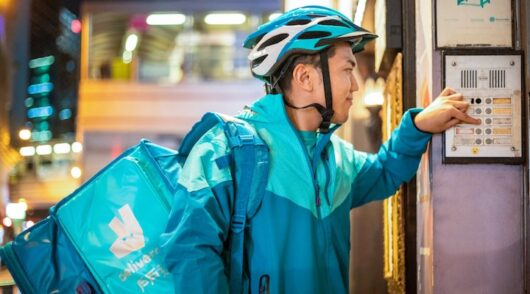Hong Kongers feel more comfortable shopping online since the start of the Covid-19 pandemic – and they are developing habits that will be “hard to break” according to a study released today.
Research of 2053 consumers and 400 senior retail executives from Hong Kong and the nine Greater Bay Area (GBA) cities undertaken by YouGov, shows 50 per cent of Hong Kong respondents and 59 per cent of those from the GBA reported greater confidence shopping online now than two years ago. Tellingly, 24 per cent of Hong Kong consumers and 23 per cent of those in the mainland GBA cities say they could live without physical retail stores.
The data is included in the fifth edition of the study, Retail’s Realignment: The Road Ahead for Omnichannel in the Greater Bay Area, a joint publication of KPMG China, GS1 Hong Kong, and HSBC.
“Consumers are buying more online than ever before, and the retail brands who have best survived this rapid transition are those who have proven agile in their response to the growing demand for digital engagement,” said Alice Yip, partner, head of consumer and industrial markets, Hong Kong, at KPMG China.
“Hong Kong and mainland China GBA retailers are already implementing strategies for regional growth across the region while also looking to expand into Southeast Asia, with industry leaders emphasising the need for adequate localisation of products, services and marketing approaches to attract the growing pool of digital-savvy consumers.”
Retail executives confident online trend will endure
The report also included expert opinions from retail executives in the region who were interviewed in-depth on current digital retail trends and how they impact their own businesses. Most of them, including the senior VP of Fung Omni Services, Michelle Leung, said they expected consumers new to shopping online – or who are shopping new categories online – would likely continue to do so after the pandemic passes.
“Ultimately, we will see current trends continue because consumers are developing habits that are hard to break,” she said in the report. Furthermore, she added, brands are finding ways to reduce costs online through economies of scale, delivering greater value for customers.
Ricky Wong, vice chairman and group CEO at HKTVmall echoed those comments, saying Covid-19 is merely a catalyst for speeding up Hong Kongers’ migration online, not the cause of e-commerce growth in itself.
“Consumers are changing their online behaviours because the online model is significantly superior to the offline model in terms of choice. For example, in the grocery category we have more than 100,000 different SKUs. No supermarket can give you a choice of 100,000 products.”
Consumers are demanding more
The study found that a majority of consumers surveyed expect a seamless transition from an in-store experience to an online experience – especially in the key Gen Z demographic, the first generation to be born into an always-connected world. Of the 18-24 year age group surveyed, 73 per cent in Hong Kong and 86 per cent in mainland GBA cities expect a swift response to product enquiries logged on online chat, and expect brands to use tech including AI to help shortlist new products.
They also expect AR functions to help them make better purchases online and prefer contactless shopping. Seventy-six percent of retailers surveyed are adopting at least one type of Gen Z-specific strategy.
However, while shoppers are unequivocal in their expectations, the study suggests retailers are failing to react fast enough to consumers’ O2O needs, with a vast gap between customer expectations and what retailers are delivering. The report found that 77 per cent of Hong Kong and 85 per cent of mainland respondents in the GBA indicated retailers need to have a better connection between channels and create a seamless customer journey. Among retail executives surveyed about their actions to enhance customer experience, only 39 per cent of businesses are currently focusing on the integration between physical stores and online, suggesting a significant gap in retailers’ O2O propositions.
Anna Lin, CEO at GS1 Hong Kong, said consumers expect a seamless transition from an in-store experience to an online experience. “They also want to engage with brands across social media and other digital media and they expect brands to use technology to improve customer service, ease of payments, flexible delivery options and convenient returns.”
This suggests that brands and retailers who forge an online-to-offline solution that encompasses multiple digital points of engagement will enjoy a significant marketplace advantage in the future, she said.
Digital wallets more popular
In another key finding, two in three consumers surveyed on either side of the border said they were more comfortable than before in using digital payments. Retailers are responding, with 30 per cent saying they are prioritising investments in technology in order to create a seamless purchasing and transactional process.
“In order to deliver a seamless customer journey, more retailers in the Greater Bay Area are looking for a single platform that can take payments from multiple channels – from credit cards, bank transfers to e-wallets,” said Lewis Sun, head of product management, Asia Pacific, global liquidity and cash management at HSBC.
Transactional volumes of HSBC’s Omni Collect payment solution in Asia which went live in 2018 increased 125 per cent year on year in April in Hong Kong and Mainland China alone, with transactional value up by 165 per cent.
In other key findings:
- While convenience is important, authenticity is the number one attribute attracting consumers to brands amid the pandemic, with two-thirds of consumers more conscious of product origin and authenticity, as their focus on health, sustainability, and well-being are sharpened.
- As retailers and brands develop more complex digital channels and deploy new technologies, sourcing, upskilling, and reskilling talent to build a future-ready workforce will be a key priority for retailers in navigating the new normal and capturing growth opportunities.






